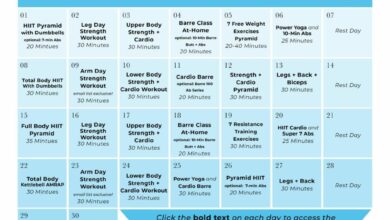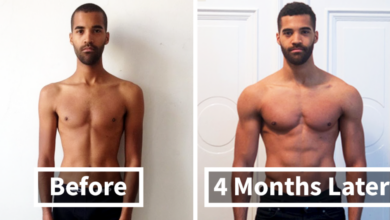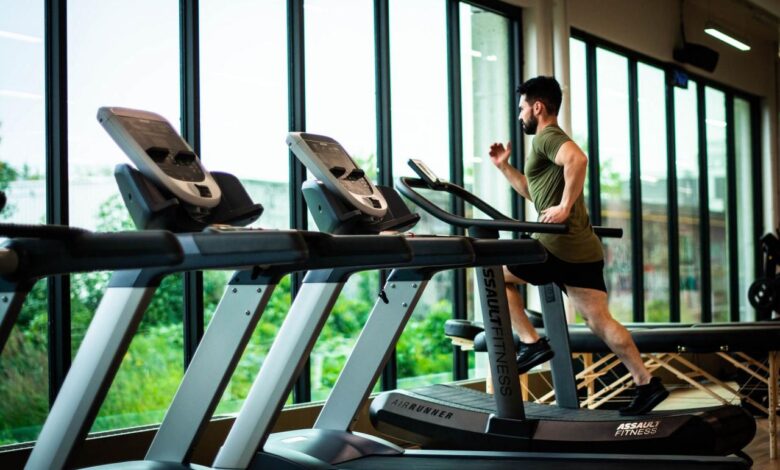
6 Treadmill Walking Mistakes to Avoid
Stepping onto a treadmill can be a great way to get your heart rate up and burn calories, but there are some common mistakes that can hinder your progress and even lead to injury. 6 treadmill walking mistakes to avoid are crucial to maximizing your workout’s effectiveness and ensuring a safe and enjoyable experience.
Let’s explore these pitfalls and learn how to walk on the treadmill like a pro.
From improper posture to neglecting your body’s signals, these mistakes can easily sneak into your routine. Understanding and addressing them will not only enhance your walking technique but also make your treadmill workouts more efficient and enjoyable.
Incorrect Posture
Maintaining proper posture while walking on the treadmill is crucial for maximizing your workout benefits and preventing injuries. A neutral spine and relaxed shoulders are key to achieving optimal alignment.
Avoiding those 6 treadmill walking mistakes can help you maximize your workout and avoid injury. But, who can resist a little treat after a good sweat session? If you’re looking for something pumpkin-spiced and RD-approved, check out 8 RD approved pumpkin flavored snacks to buy at Trader Joe’s.
Just remember to keep your snacking in moderation, especially if you’re trying to stay on track with your fitness goals. After all, a healthy diet is just as important as a good workout routine when it comes to achieving your fitness goals!
Effects of Slouching or Leaning Forward
Slouching or leaning forward while walking on the treadmill can put unnecessary stress on your back, neck, and shoulders. This can lead to pain, discomfort, and even long-term injuries. Additionally, poor posture can negatively impact your balance and coordination, making it harder to maintain a consistent pace and stride length.
Tips for Improving Posture
- Engage Your Core: Actively engage your core muscles to support your spine and maintain a neutral posture. Think about drawing your belly button towards your spine and keeping your abdominal muscles tight.
- Keep Your Shoulders Relaxed: Avoid hunching or rounding your shoulders. Instead, keep them relaxed and pulled back slightly. Imagine you are holding a small ball between your shoulder blades.
- Maintain a Straight Spine: Focus on maintaining a natural curve in your lower back while keeping your spine straight. Avoid excessive arching or rounding of your back.
- Look Straight Ahead: Avoid looking down at your feet or the treadmill. Instead, look straight ahead, about 10-15 feet in front of you. This will help you maintain a balanced posture and prevent neck strain.
Holding On Too Tightly
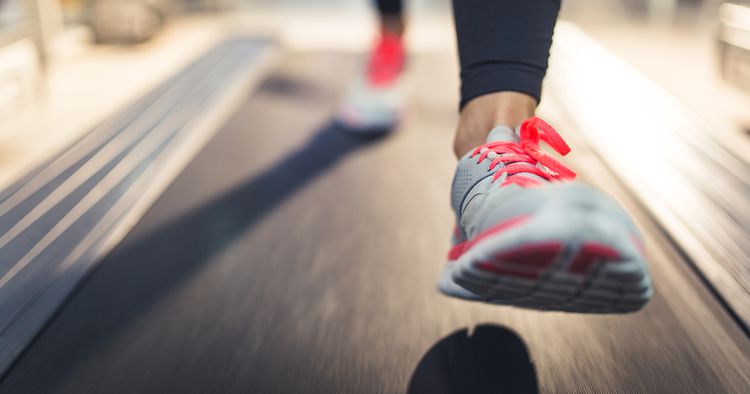
Holding onto the handrails while walking on a treadmill might seem like a good way to keep your balance, but it can actually hinder your walking technique and limit the benefits of your workout. Excessive reliance on handrails can prevent you from engaging your core muscles and achieving a proper walking form.
Mastering the treadmill takes practice, and avoiding common mistakes is key to maximizing your workout. From improper posture to neglecting incline, there are plenty of pitfalls to watch out for. But did you know that understanding the science behind nutrition can also enhance your treadmill routine?
Check out this article on 3 surprising takeaways about being a registered dietitian to learn how proper fueling can impact your performance. Once you’ve got your nutrition dialed in, you can focus on perfecting your form and maximizing your treadmill time.
Impact on Walking Technique
Holding onto the handrails too tightly can disrupt your natural walking motion. When you use your arms for support, you tend to lean forward, which can strain your back and neck. This can also lead to an uneven gait and less efficient stride length.
Muscle Engagement and Calorie Burn
Walking without handrail support allows your core muscles to work harder to maintain balance. This increased engagement of your core, leg, and glute muscles contributes to a more effective workout, resulting in a higher calorie burn. Research suggests that walking with handrail support can reduce calorie expenditure by up to 20%.
Reducing Handrail Dependence
To maximize the benefits of your treadmill walking, it’s crucial to gradually reduce your reliance on handrails. Here’s a progression you can follow:
- Start by using the handrails for balance only, and gradually decrease your grip as you feel more confident.
- Try walking for short intervals without holding on, gradually increasing the duration over time.
- Focus on engaging your core muscles and maintaining an upright posture.
- If you find yourself swaying, slow down your pace or reduce the incline until you feel more stable.
Ignoring Proper Foot Placement
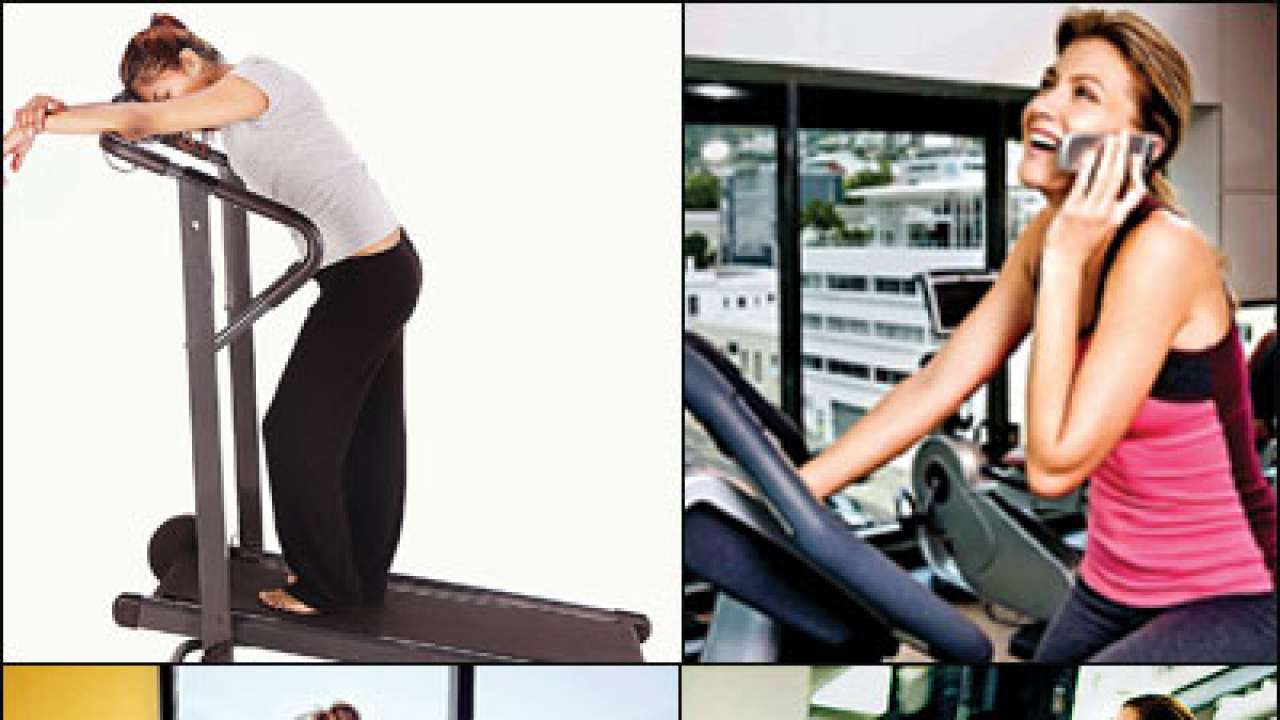
Your foot strike pattern on the treadmill can significantly impact your walking efficiency and risk of injury. While it’s tempting to simply step onto the belt and start walking, paying attention to how your foot lands can make a big difference.
Foot Strike Patterns and Their Impact
Different foot strike patterns have unique benefits and drawbacks. Understanding these can help you choose the pattern that suits your body and goals best.
| Foot Strike Pattern | Benefits | Drawbacks |
|---|---|---|
| Heel Strike |
|
|
| Midfoot Strike |
|
|
| Forefoot Strike |
|
|
Correct Foot Placement for Optimal Treadmill Walking
The ideal foot placement for treadmill walking involves a smooth transition from heel to toe. This motion minimizes impact forces and promotes a more efficient stride.
Here’s how to achieve it:
- Initiate contact with the heel:As your foot lands on the belt, let your heel touch down first, followed by a gentle roll through the midfoot.
- Engage the forefoot:As you push off, engage your forefoot to propel your body forward. The toe should leave the belt last, creating a smooth and continuous motion.
This foot placement promotes a natural walking motion that engages your leg muscles effectively. It helps distribute impact forces across your joints, minimizing stress and improving overall walking efficiency.
Ignoring Your Body’s Signals
Your body is a remarkable machine, and it’s constantly communicating with you. However, it’s easy to ignore those signals, especially when you’re focused on achieving a fitness goal. But pushing yourself too hard without paying attention to your body’s feedback can lead to injury, burnout, and ultimately, hinder your progress.
The key is to learn to differentiate between normal discomfort and potential injury. Normal discomfort is expected during exercise, such as muscle soreness or mild breathlessness. However, if you experience sharp pain, persistent discomfort, or a significant change in your ability to perform, it’s crucial to stop and address the issue.
Understanding Your Body’s Feedback
Your body communicates with you through various signals, each indicating a different message. Pay attention to these cues to ensure you’re training effectively and safely:
- Pain:Sharp, sudden pain is usually a sign of injury. It’s important to stop immediately and assess the situation. Mild, aching pain is normal after exercise, but it should subside within a few days. If it persists or worsens, consult a healthcare professional.
- Fatigue:Feeling tired is normal after exercise, but excessive fatigue or exhaustion could signal overtraining. It’s important to listen to your body and take rest days when needed.
- Shortness of breath:Some shortness of breath is normal during exercise, but if you’re struggling to catch your breath or feel lightheaded, it’s a sign to slow down or stop.
- Muscle soreness:Delayed-onset muscle soreness (DOMS) is a normal response to exercise, typically appearing 12-24 hours after a workout. It’s important to distinguish between normal soreness and pain, which could indicate injury.
Adjusting Workout Intensity
To avoid injury and promote optimal performance, it’s crucial to adjust your workout intensity based on your body’s feedback.
- Listen to your body:Pay attention to how you feel during and after your workouts. If you experience any discomfort or pain, adjust your intensity or take a break.
- Start slow and gradually increase intensity:Avoid jumping into intense workouts, especially if you’re new to exercise. Start with shorter sessions and lower intensity, gradually increasing the duration and intensity as your fitness improves.
- Take rest days:Rest days are essential for muscle recovery and preventing overtraining. Plan for at least one or two rest days per week, allowing your body to recover and rebuild.
- Hydrate properly:Dehydration can lead to fatigue, muscle cramps, and even heat exhaustion. Drink plenty of water before, during, and after your workouts.
- Warm up and cool down:Warming up prepares your muscles for exercise, reducing the risk of injury. Cooling down helps your body recover and prevents muscle stiffness.
Not Varying Your Routine: 6 Treadmill Walking Mistakes To Avoid
Treadmill walking can become monotonous if you stick to the same routine day after day. While consistency is important for fitness progress, a lack of variation can lead to plateaus and boredom. The key to keeping your treadmill walks engaging and effective is to incorporate changes that challenge your body in new ways.
Avoiding those six common treadmill walking mistakes can really boost your workout, but let’s be honest, sometimes you just need a warm, comforting meal after a good sweat. If you’re looking for some healthy and delicious options, check out these 9 hearty winter soups under 360 calories – they’re perfect for a post-workout fuel-up.
And once you’ve refueled, get back to those treadmill tips and crush your fitness goals!
Sample Interval Training Program
Interval training is a highly effective way to boost your cardiovascular fitness and burn more calories. It involves alternating between periods of high-intensity exercise and recovery. Here’s a sample interval training program for treadmill walking:
- Warm-up:5 minutes of walking at a moderate pace.
- Workout:
- 1 minute at a brisk pace (70-80% of your maximum heart rate).
- 1 minute at a moderate pace (50-60% of your maximum heart rate).
Repeat this cycle 8-10 times.
- Cool-down:5 minutes of walking at a slow pace.
You can adjust the intensity and duration of the intervals based on your fitness level. Beginners can start with shorter intervals and lower intensity, gradually increasing the duration and difficulty as they get fitter.
Neglecting Warm-up and Cool-down
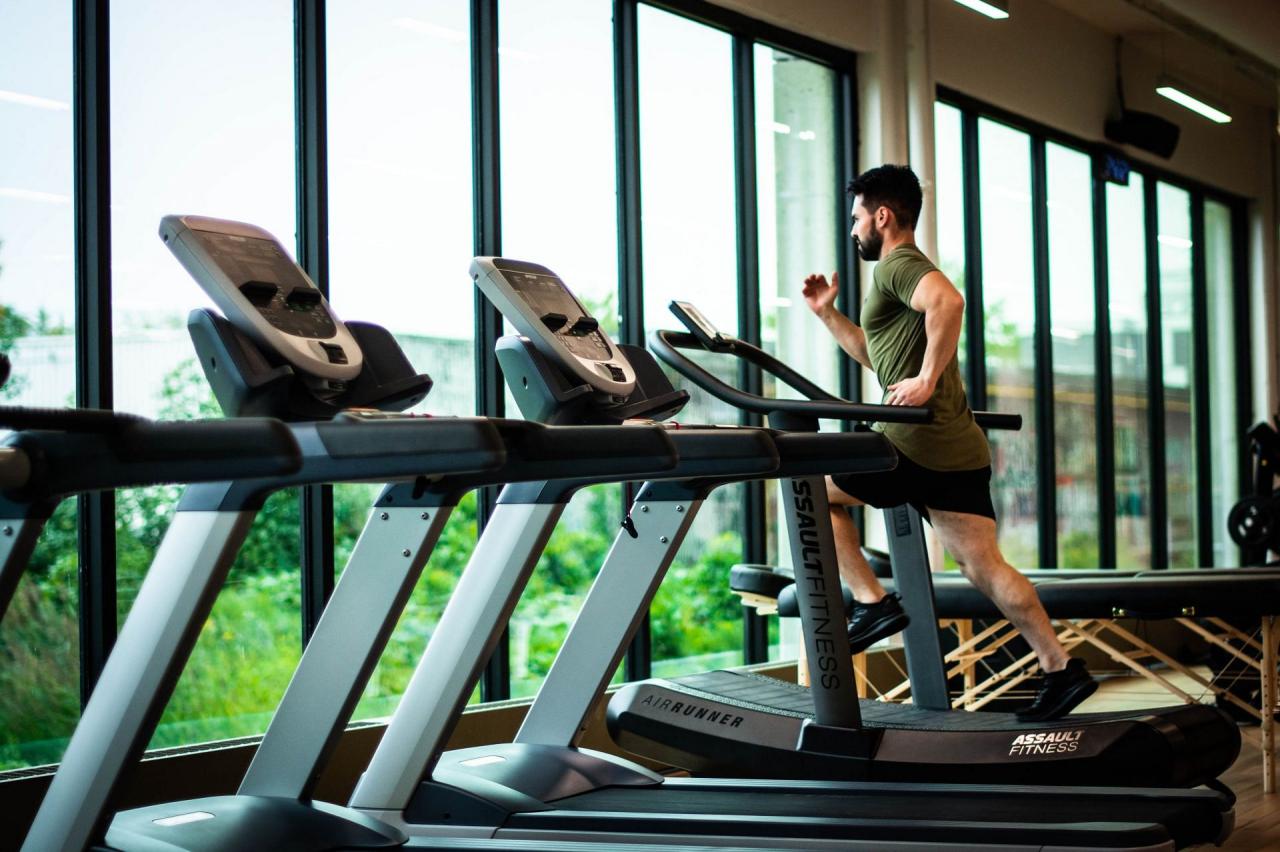
You might be tempted to jump right onto the treadmill and start walking, but neglecting a proper warm-up and cool-down can be detrimental to your fitness journey. Just like a car needs time to warm up its engine before hitting the road, your body requires preparation before engaging in strenuous activity.
Similarly, a cool-down allows your body to gradually transition back to a resting state, preventing injuries and promoting recovery.
The Importance of a Warm-Up, 6 treadmill walking mistakes to avoid
A warm-up is essential for preparing your body for exercise by increasing blood flow, raising your heart rate, and loosening your muscles. This helps to improve your performance, reduce the risk of injury, and make your workout more enjoyable.
A Dynamic Warm-Up Routine
A dynamic warm-up involves moving your body through a series of controlled movements, gradually increasing your heart rate and flexibility. Here’s a sample routine specifically designed for treadmill walking:
- Arm circles: Stand with your feet shoulder-width apart and slowly circle your arms forward and backward for 10 repetitions each way. This helps to loosen your shoulders and improve blood flow to your arms.
- Leg swings: Stand with your feet shoulder-width apart and swing one leg forward and backward for 10 repetitions. Repeat with the other leg. This warms up your hip flexors and hamstrings.
- High knees: Stand with your feet shoulder-width apart and bring your knees up towards your chest as you walk in place. Aim for 20 repetitions.
- Butt kicks: Stand with your feet shoulder-width apart and bring your heels towards your glutes as you walk in place. Aim for 20 repetitions.
- Walking lunges: Take a step forward with one leg and lower your body until both knees are bent at a 90-degree angle. Push off with your front foot and repeat with the other leg. Aim for 10 repetitions per leg.
The Significance of a Cool-Down
After a treadmill walk, it’s crucial to gradually slow down and allow your body to recover. A cool-down helps to reduce muscle soreness, prevent injury, and promote relaxation.
A Cool-Down Routine
Here’s a sample cool-down routine for treadmill walking:
- Slow walking: Reduce your treadmill speed to a leisurely pace and continue walking for 5 minutes. This allows your heart rate and breathing to gradually return to normal.
- Static stretches: Hold each stretch for 30 seconds, focusing on the muscles you worked during your workout. Examples include:
- Hamstring stretch: Sit on the floor with your legs extended in front of you. Reach towards your toes, keeping your back straight.
- Quadriceps stretch: Stand with your feet shoulder-width apart and grab your right foot with your right hand. Pull your heel towards your glutes, keeping your back straight.
- Calf stretch: Stand facing a wall with your feet shoulder-width apart. Lean forward, keeping your back straight and your heels on the ground.
Conclusion
Mastering the art of treadmill walking goes beyond simply stepping onto the machine. By understanding and avoiding these common mistakes, you can unlock the full potential of your workouts, improve your fitness, and prevent potential injuries. Remember, listening to your body, maintaining proper form, and gradually progressing are key to achieving your fitness goals while enjoying the benefits of treadmill walking.




